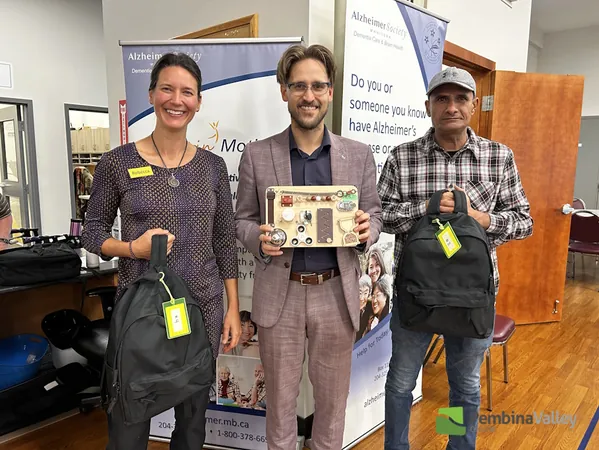
Harnessing the Power of Vegetables: A Revolution in Nutritional Health
2025-09-19
Author: Liam
Transforming Health in Northern Manitoba
In a vibrant hall on the Opaskwayak Cree Nation (OCN), a remarkable initiative is underway to combat soaring rates of diabetes and hypertension. Rows of nutrient-packed kale, cabbage, and broccoli sprouts thrive under the glow of cutting-edge LED lights, symbolizing hope for this northern Manitoba community.
Meet the Visionary: Miyoung Suh
Professor Miyoung Suh from the University of Manitoba is at the forefront of this innovative project, striving to cultivate 'supercharged' greens that may hold the key to improved health outcomes. With nearly half of OCN’s adult population grappling with serious health issues, her approach could change lives.
Smart Farming Technology
At OCN’s state-of-the-art vertical farm, pioneers like Suh are utilizing artificial intelligence to create an ideal growth environment. This high-tech facility efficiently regulates light, nutrients, water, and carbon dioxide to boost the natural health benefits of microgreens—young plants packed with nutrients.
"This technology empowers us to cultivate vegetables that are vastly more nutritious than what's typically available," says Suh, emphasizing the enhanced bioactive compounds found in Brassica family vegetables, like kale and broccoli, which are known for their anti-inflammatory and blood sugar-regulating benefits.
Groundbreaking Research and Results
Back in her lab at the St. Boniface Hospital Research Centre, Suh is analyzing these greens, transforming them into powders for detailed nutrient comparison. Tests indicate that OCN-grown vegetables outshine store-bought counterparts in key nutrients, presenting a promising avenue for better health.
In a compelling experiment, rats fed high-fat, high-sugar diets showed significant health improvements after consuming the enriched greens—better heart function, lower blood pressure, and less body fat—all crucial factors in combating obesity-related conditions. Now, studies on type 2 diabetic rats are underway to verify these encouraging findings.
Making Vegetables Palatable
Yet, even with such nutritious powerhouses, the challenge remains: will the community consume these greens? Understanding that fresh produce hasn't been prevalent in local diets, Suh’s team is creatively integrating microgreens into beloved dishes.
Collaborating with chefs from Red River College’s Prairie Research Kitchen, they’ve crafted recipes incorporating the greens into familiar meals. One popular dish, kale chili, was a hit during OCN’s Indian Days celebration, while cornbread muffins with kale powder were relished by many who had never tried the vegetable.
A Community-Led Vision
The initiative began directly with community input and demands. Since 2016, the OCN vertical farm has operated under the guidance of the OCN Health Authority, ensuring that the project aligns closely with local health goals. This locally-run farm not only provides fresh produce year-round but also fosters food sovereignty, empowering the community to control its dietary resources.
As this project unfolds, it's a testament to the transformative impact of partnership and innovation in addressing health disparities. With each fresh crop, OCN is planting the seeds of sustainable health solutions, proving that where others see obstacles, visionary communities see opportunity.









 Brasil (PT)
Brasil (PT)
 Canada (EN)
Canada (EN)
 Chile (ES)
Chile (ES)
 Česko (CS)
Česko (CS)
 대한민국 (KO)
대한민국 (KO)
 España (ES)
España (ES)
 France (FR)
France (FR)
 Hong Kong (EN)
Hong Kong (EN)
 Italia (IT)
Italia (IT)
 日本 (JA)
日本 (JA)
 Magyarország (HU)
Magyarország (HU)
 Norge (NO)
Norge (NO)
 Polska (PL)
Polska (PL)
 Schweiz (DE)
Schweiz (DE)
 Singapore (EN)
Singapore (EN)
 Sverige (SV)
Sverige (SV)
 Suomi (FI)
Suomi (FI)
 Türkiye (TR)
Türkiye (TR)
 الإمارات العربية المتحدة (AR)
الإمارات العربية المتحدة (AR)